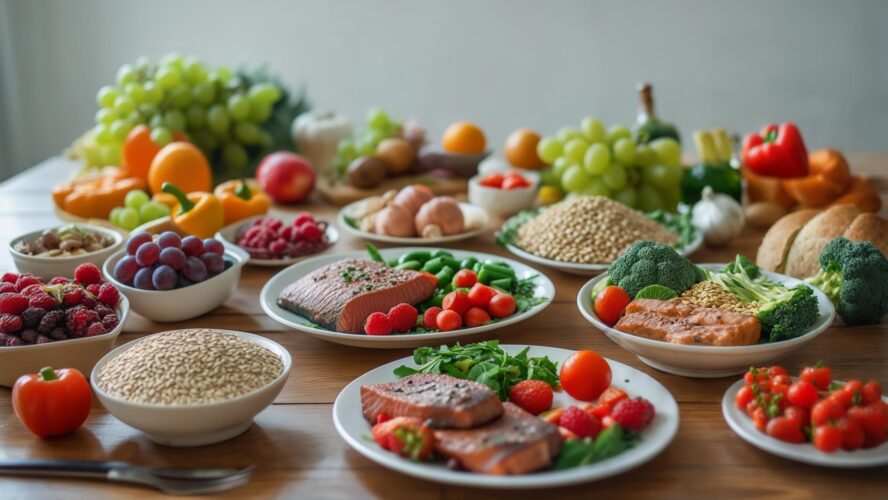
Table of Contents
- The Game-Changing Power of Circadian Nutrition
- Your Gut Bacteria Might Be Your Secret Weapon
- Why Your DNA Holds the Key to Peak Performance
- The Smart System That Adapts Your Nutrition Daily
- Final Thoughts
TL;DR
- Timing your meals with your body’s natural clock can boost performance more than just eating the “right” foods
- Your gut bacteria directly impact how well you perform and recover – feeding them properly is crucial
- Genetic testing can reveal whether you should drink that pre-workout coffee or skip it entirely
- Elite athletes don’t follow rigid meal plans – they use adaptive systems that change based on daily biomarkers
- Simple morning assessments like heart rate variability can tell you exactly how to adjust your nutrition that day
- Environmental factors like altitude and heat require specific nutritional strategies most athletes completely ignore
Look, if you’re training seriously, you’re probably eating way more than your non-athlete friends – we’re talking 2,400-3,000 kcal and 2,200-2,700 kcal per day respectively depending on whether you’re male or female. But here’s the thing that blew my mind: despite eating more, most athletes are still missing the mark on what actually moves the performance needle.
The secret isn’t about cramming in more calories – it’s about understanding the hidden science that’s completely changing how smart athletes fuel their bodies. I’ve spent years diving deep into research that’s flipping everything we thought we knew about sports nutrition on its head. What I discovered will probably surprise you – and it might completely change how you approach your own fueling strategy.
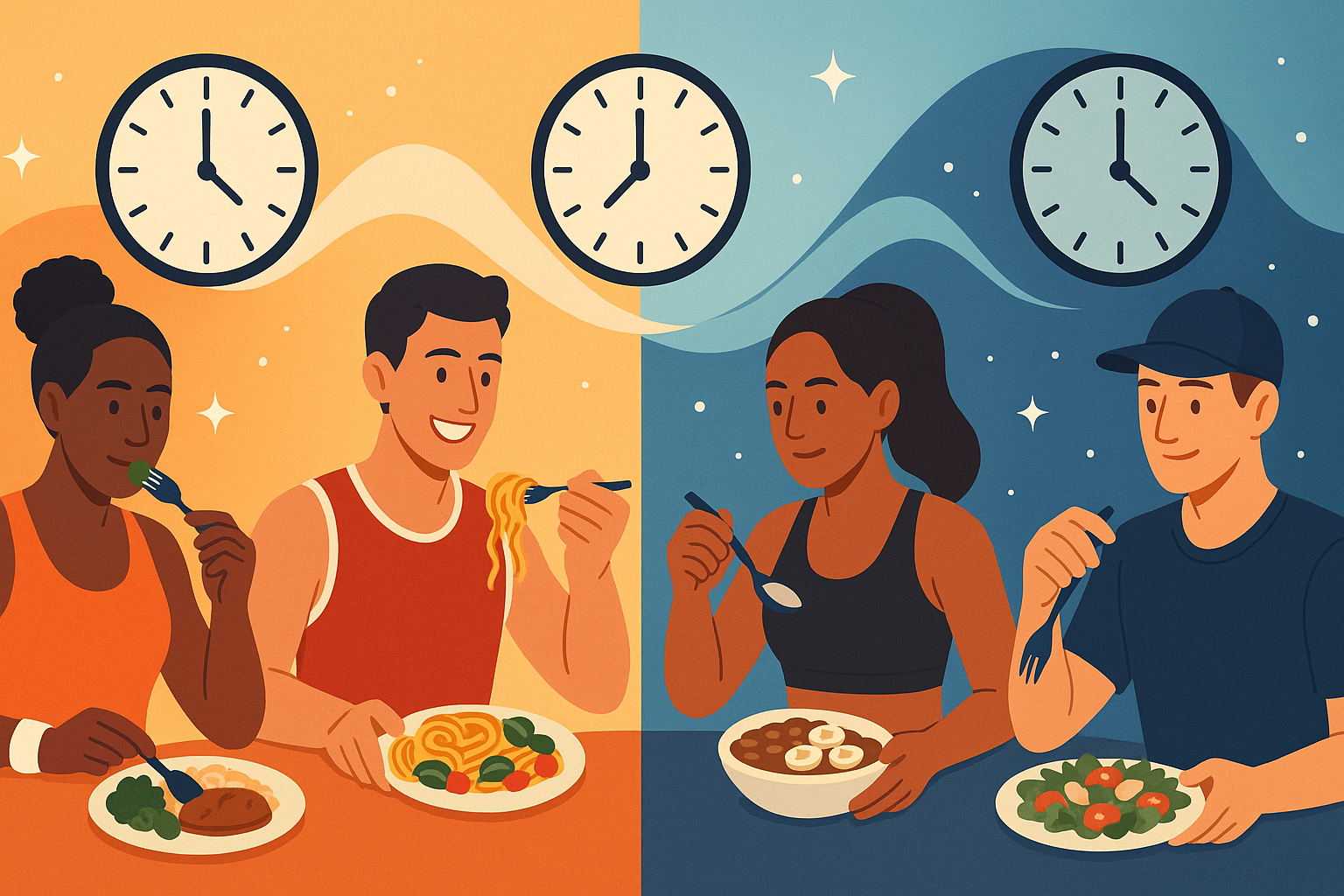
The Game-Changing Power of Circadian Nutrition
Most athletes obsess over what to eat but completely miss the timing piece. Here’s what nobody talks about: your body’s internal clock dramatically affects how you process nutrients, and understanding this can give you a massive edge over everyone else who’s still eating whenever it’s convenient.
Your metabolism isn’t just chugging along at the same speed all day – it’s actually going through these predictable ups and downs that you can totally use to your advantage. For athletes looking to nail their nutrition timing, understanding intermittent fasting strategies can give you solid insights into meal timing that actually works with your body’s natural rhythms.
The athletes meal plan that actually works isn’t built around convenience or what your mom used to make – it’s built around biology.
Strategic Timing Beats Perfect Macros Every Time
Your metabolism shifts throughout the day in ways that most people never think about. By mapping these metabolic windows, you can time your nutrients to maximize training gains and speed up recovery. This isn’t about complicated schedules that’ll stress you out – it’s about working with your body instead of fighting against it.
Okay, this might look complicated at first, but stick with me – this table basically shows you when your body is actually ready for different types of food:
| Time Window | Metabolic State | Optimal Nutrients | Performance Impact |
|---|---|---|---|
| 4-6 AM | Peak cortisol, high fat oxidation | Protein + healthy fats | Enhanced fat burning capacity |
| 6-10 AM | Peak insulin sensitivity | Complex carbohydrates | Optimal glycogen storage |
| 2-4 PM | Natural energy dip | Quick-digesting carbs | Sustained afternoon energy |
| 8-10 PM | Growth hormone prep | Amino acids + minimal carbs | Amplified recovery |
Don’t stress about hitting these windows perfectly. Even getting close makes a difference.
The Pre-Dawn Advantage Most Athletes Miss
Between 4-6 AM, your body enters this unique metabolic state where cortisol peaks naturally. This creates an opportunity that most athletes sleep through (literally). Eating some protein and healthy fats during this window can help you burn fat better while building muscle – but you need to know exactly what to consume and when.
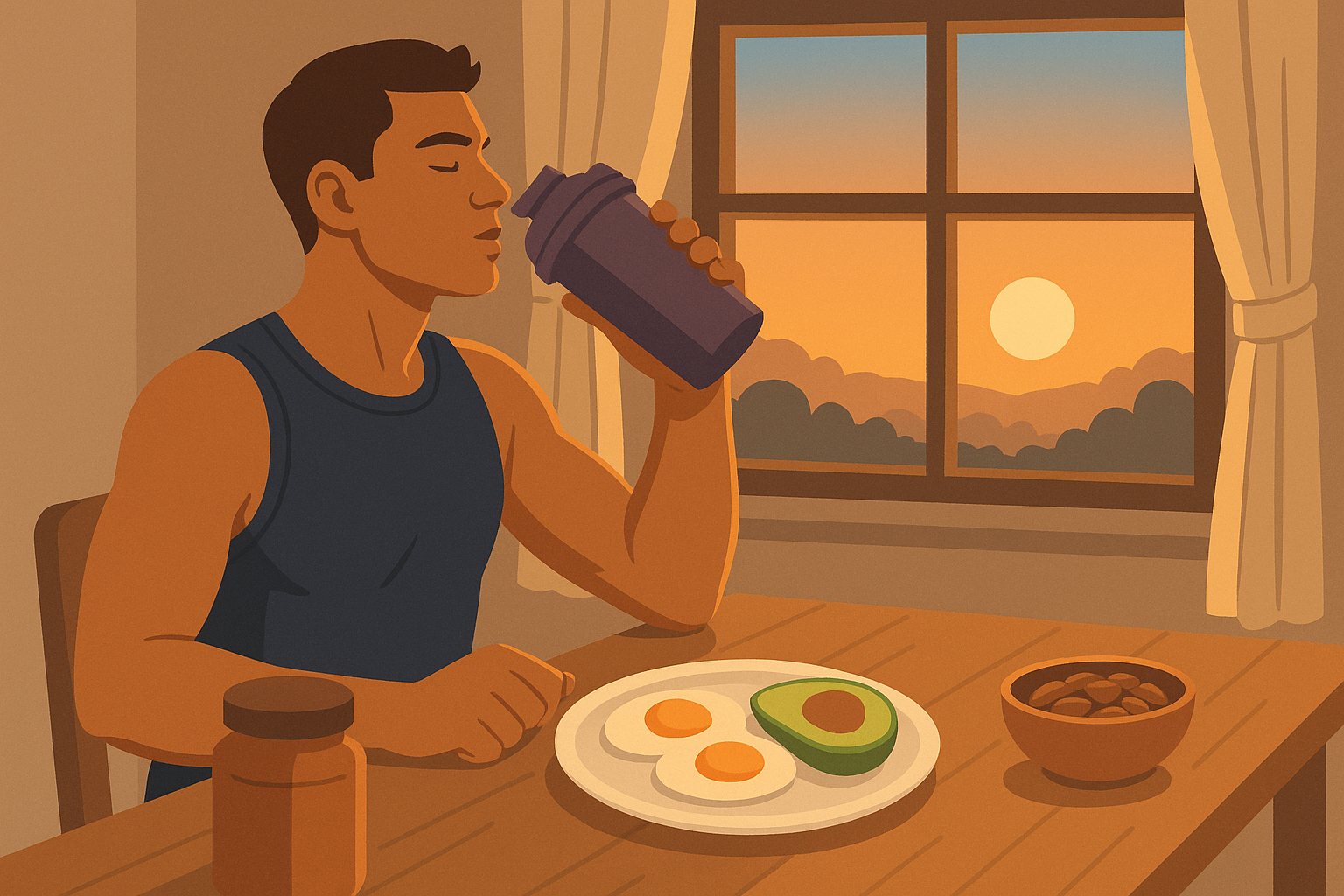
I know what you’re thinking – who wants to eat at 5 AM? But hear me out. The foundation of early morning nutrition starts with understanding how to prepare nutrient-dense breakfast options that support metabolic optimization during this crucial window.
You don’t need to become a morning person overnight. Start by having a small protein-rich snack if you’re already up early for training. Even something simple can tap into this metabolic advantage.
Why Your Carb Timing Is Probably Wrong
Here’s something that’ll probably annoy you: insulin sensitivity follows a predictable daily pattern – highest in the morning, tanking toward evening. Yet most athletes eat their biggest meals at dinner when their bodies are least equipped to handle carbs efficiently. Flipping this pattern can optimize how you store energy while preventing unwanted fat gain.
Instead of having pasta for dinner, try consuming your largest carb portion at breakfast. A morning meal of oatmeal with berries and nuts will be processed way more efficiently than the same meal eaten at 8 PM, when your insulin sensitivity has naturally declined by up to 50%.
This shift takes some getting used to, and honestly, it goes against everything we’ve been taught about meal timing. But the performance benefits are worth feeling a little weird about eating “dinner foods” for breakfast. Your 7-day meal plan for athletes should prioritize carbs early and taper them as the day progresses.
The Evening Recovery Window You’re Wasting
After 8 PM, your body starts prepping for growth hormone release during early sleep phases. Consuming specific amino acids 2-3 hours before bed can amplify this natural muscle-building window. Most athletes either eat too late or choose the wrong foods, completely missing this recovery opportunity.
I used to think eating before bed would make me fat. Turns out, the right foods at the right time actually help you recover faster and sleep better.
Eating With the Seasons Actually Works
Your nutritional needs change with seasonal light exposure, temperature variations, and natural food cycles. Elite athletes are starting to periodize their nutrition seasonally, and the results speak for themselves. This approach prevents those frustrating metabolic plateaus that derail so many training programs.
Recent insights from sports nutrition experts reveal that high school students are notoriously under-fueled,” with many “skipping breakfast and skimping on lunch” according to Tricia Azra, Registered Dietitian Nutritionist at Atrium Health. This timing mismatch with natural rhythms just makes the problem worse for developing athletes.
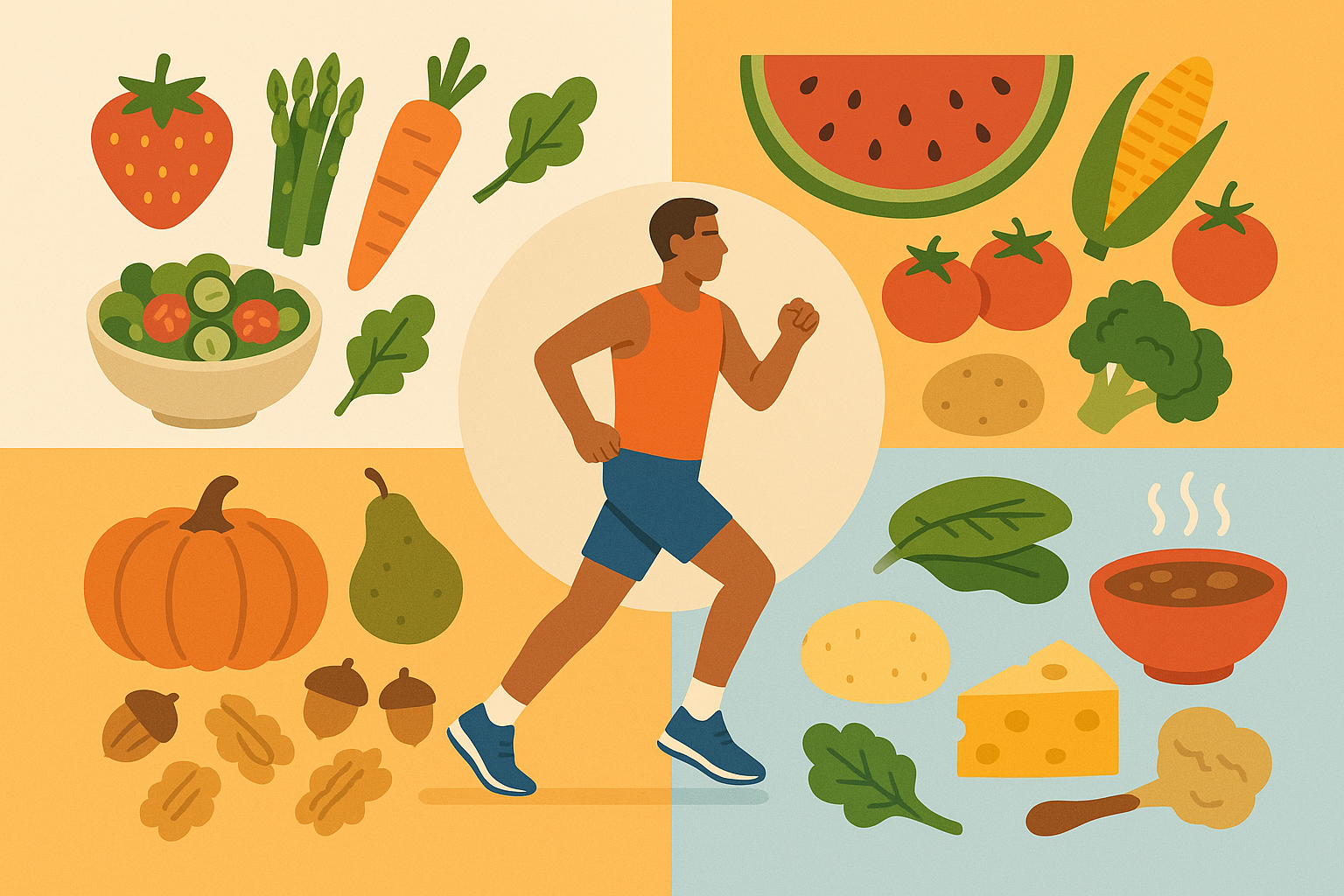
How Training Phases Should Reshape Your Plate
Base building phases require completely different fuel ratios than peak competition periods. Gradually shifting macronutrient percentages over 4-6 week cycles keeps your metabolism responsive and prevents those frustrating plateaus where nothing seems to work anymore.
During base building, I recommend higher fat percentages to enhance aerobic capacity. Competition phases call for strategic carb loading protocols. Your 7-day meal plan for athletes needs to reflect these cyclical changes, not remain the same boring rotation year-round.
Start Here: Pick one training phase and adjust your macros by just 5-10% for two weeks. Notice how your energy and recovery change.
Your Hydration Strategy Is Stuck in the Past
Hydration needs fluctuate based on how your kidneys function throughout the day, your core body temperature cycles, and hormonal changes. The “drink 8 glasses of water” advice doesn’t cut it for athletes who understand how their bodies actually process fluids at different times.
Sports medicine specialists emphasize that “thirst is a late sign of dehydration” and athletes shouldn’t wait until they feel thirsty to hydrate, according to Dr. Hall at Phoenix Children’s Sports Medicine team.
Proper hydration extends beyond chugging water and includes understanding hydrating foods that support athletic performance throughout different seasons and training intensities.
Morning Rehydration Done Right
You wake up naturally dehydrated from overnight water loss, but standard sports drinks aren’t designed for this specific need. The electrolyte balance required differs significantly – higher sodium, lower sugar concentrations work better for morning rehydration than what most athletes grab for.
I’ve found that a pinch of sea salt in water with a squeeze of lemon works better than most expensive commercial options for that first morning hydration hit. Sometimes the simple stuff just works.
Your Gut Bacteria Might Be Your Secret Weapon
Here’s something wild – the bacteria in your gut can actually make you perform better. I’m not talking about general “gut health” stuff you see on Instagram. I mean specific bacteria that can help you clear lactate faster, reduce inflammation, and absorb nutrients more efficiently. Elite athletes are starting to realize that feeding their microbiome is as important as feeding their muscles.
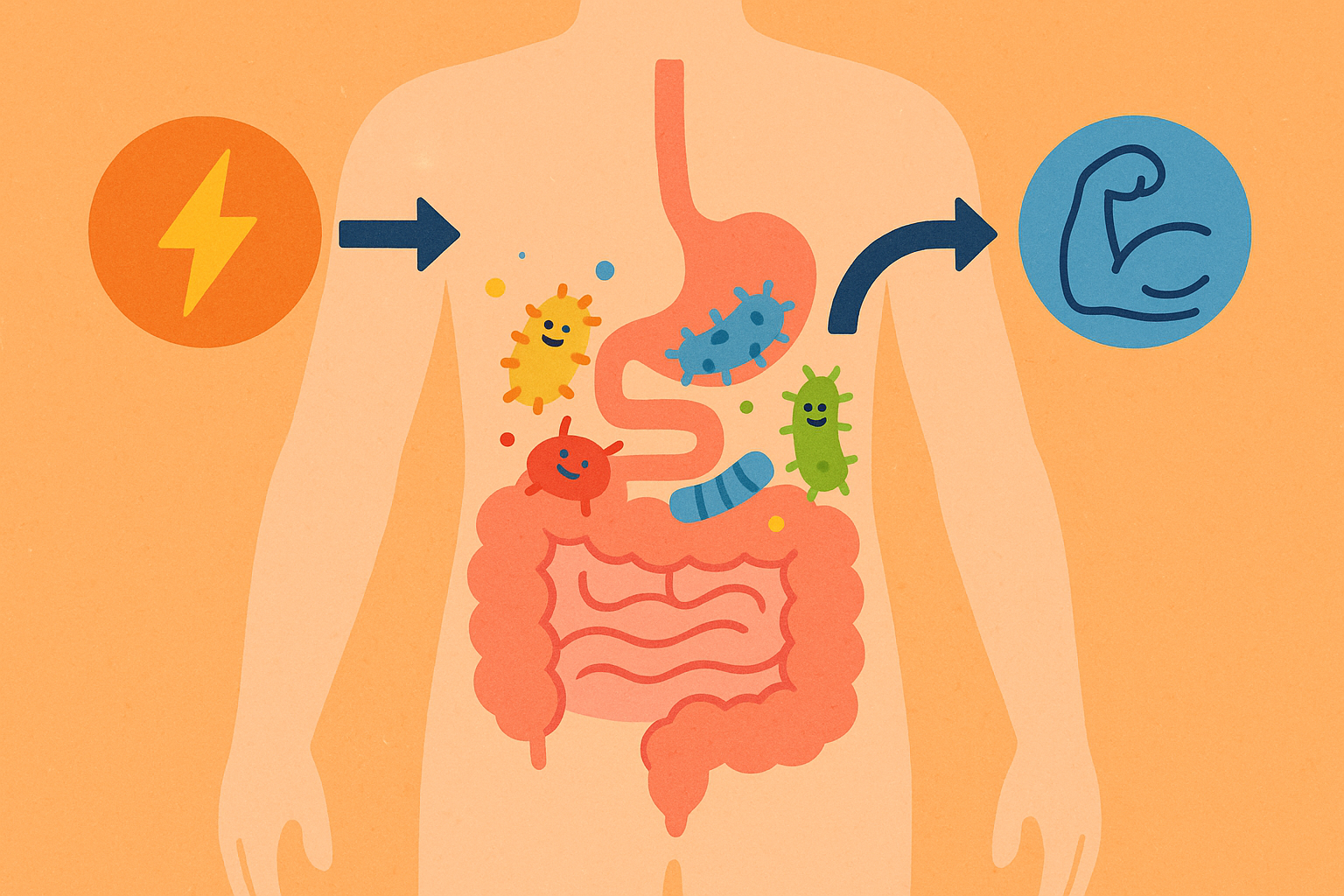
The connection between gut health and performance becomes clearer when exploring emerging gut health strategies that support both digestive function and athletic recovery.
The Bacteria That Actually Boost Performance
Different bacterial strains enhance specific performance markers, and this knowledge is honestly game-changing. Lactobacillus strains may improve how quickly you clear lactate, while Bifidobacterium species can boost your immune function during heavy training periods. Understanding which strains benefit your sport can provide measurable performance improvements that you can actually feel.
Sport-Specific Probiotic Strategies
Endurance athletes benefit from different bacterial strains than power athletes. Creating targeted probiotic strategies based on your sport’s specific demands works way better than just grabbing whatever probiotic supplement is on sale at the store.
Here’s a breakdown that actually matters:
| Sport Type | Beneficial Bacterial Strains | Primary Benefits | Food Sources |
|---|---|---|---|
| Endurance | Lactobacillus acidophilus | Improved lactate clearance | Kefir, yogurt |
| Power/Strength | Bifidobacterium bifidum | Enhanced protein synthesis | Fermented vegetables |
| Team Sports | Lactobacillus rhamnosus | Immune system support | Kombucha, sauerkraut |
| Combat Sports | Streptococcus thermophilus | Reduced inflammation | Greek yogurt, miso |
A marathon runner might focus on consuming kefir and fermented foods rich in Lactobacillus strains 2-3 hours before long training runs, while a powerlifter would benefit more from fermented vegetables containing Bifidobacterium strains consumed post-workout to support muscle protein synthesis.
Bottom Line: Try adding one fermented food that matches your sport type for two weeks and see how your recovery feels.
The Prebiotic Timing Game
The fiber types that feed beneficial bacteria must be strategically timed around training. Certain prebiotics can cause GI distress during exercise but are crucial for long-term gut health. Knowing when to consume these foods makes the difference between gut issues and gut optimization.
I learned this the hard way during a particularly brutal training block where I was eating raw vegetables right before workouts. My gut was absolutely not happy, but moving those same foods to post-workout completely changed the game. Sometimes timing really is everything.
Food Combinations That Fight Inflammation Better
Combining specific foods creates compound effects that reduce exercise-induced inflammation more effectively than individual anti-inflammatory foods alone. These synergistic combinations can dramatically impact recovery times and training adaptation, but most athletes have no idea which foods actually work together.
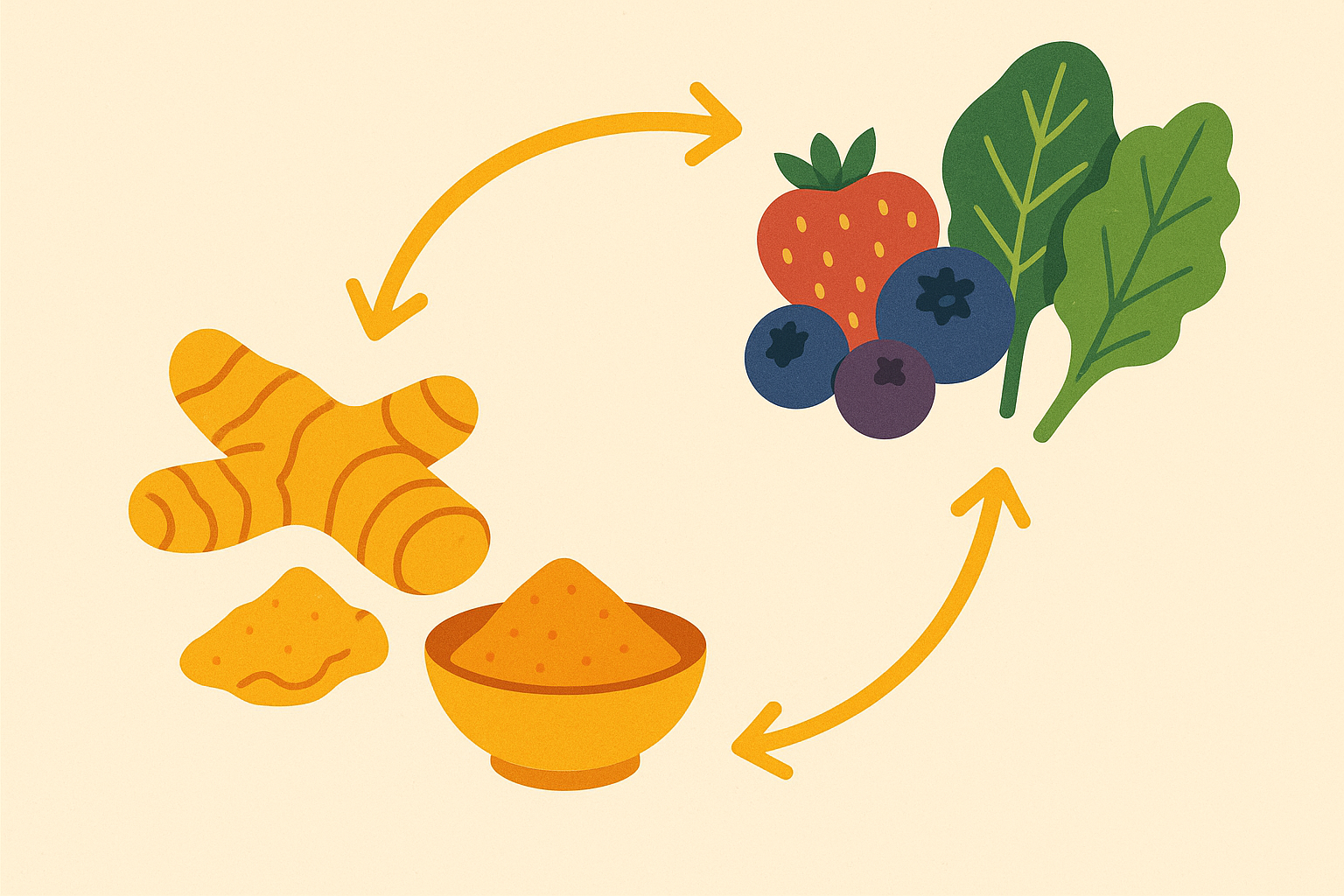
Building on inflammation reduction strategies, athletes can benefit from understanding digestive optimization techniques that support both gut health and nutrient absorption.
The Polyphenol Stacking Secret
Certain plant compounds work synergistically when consumed together. Pairing quercetin-rich foods with piperine (black pepper) can increase absorption by up to 2000%, dramatically enhancing anti-inflammatory effects. These stacking techniques can amplify the benefits of foods you’re already eating.
Think turmeric with black pepper, or green tea with citrus. These combinations aren’t accidents – they’re based on solid biochemistry that can give you a real edge in recovery. It’s like getting a performance boost from your spice rack.
Why Your DNA Holds the Key to Peak Performance
Before you roll your eyes at genetic testing (I used to think
Before you roll your eyes at genetic testing (I used to think it was just expensive horoscopes), hear me out on this coffee thing. Your genetic makeup determines how you process different nutrients, respond to training, and recover from exercise. Understanding your genetic profile allows for truly personalized nutrition strategies that can provide significant competitive advantages. This isn’t futuristic science – it’s available now and being used by smart athletes everywhere.
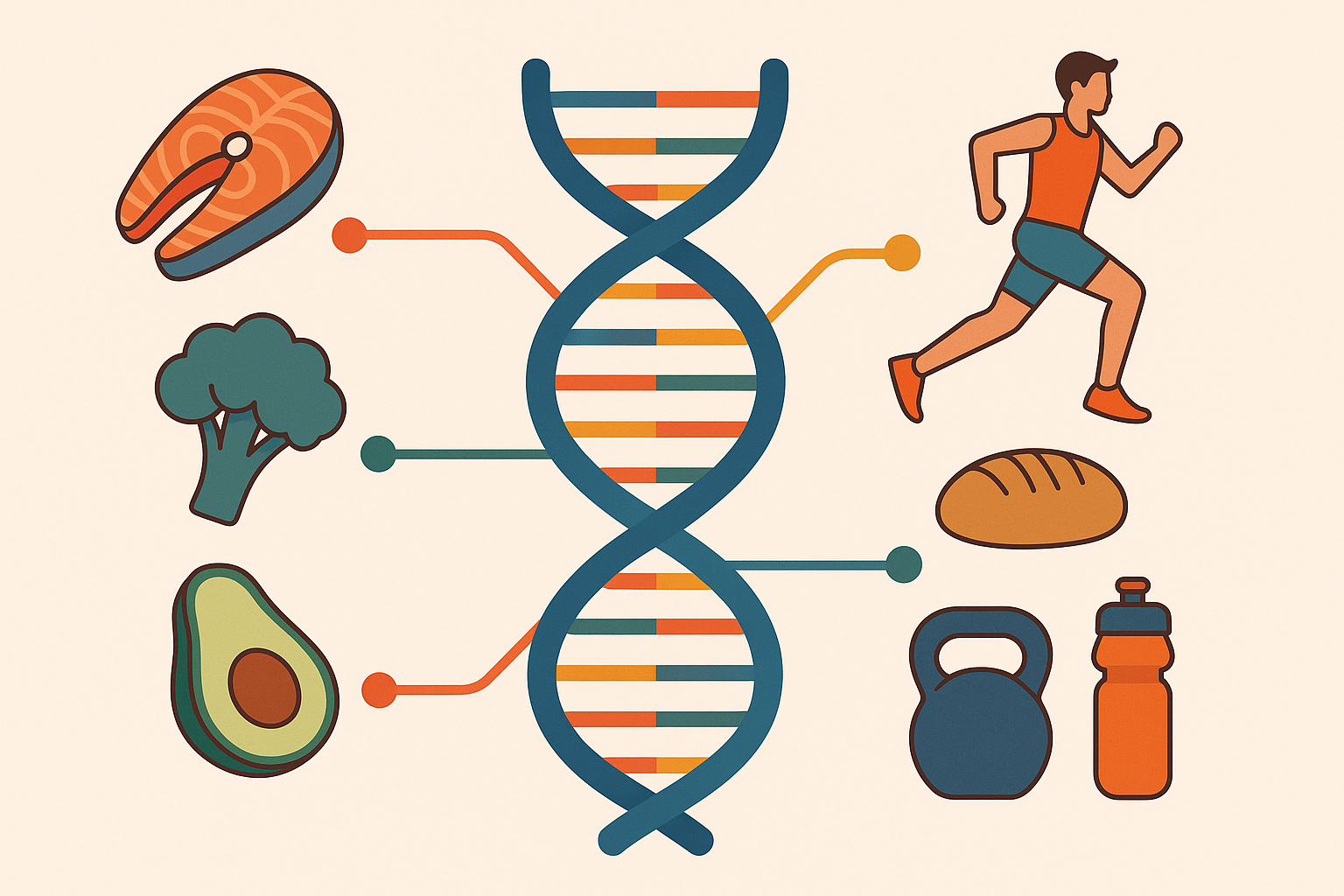
Genetic Testing That Actually Matters for Athletes
Specific genetic variations affect everything from caffeine metabolism to carbohydrate tolerance. Testing for key SNPs (single nucleotide polymorphisms) can guide precise nutritional choices that align with your unique biology. This takes the guesswork out of nutrition and replaces it with personalized precision.
Look, I get it – genetic testing costs money and not everyone can afford it. You can still figure out a lot about yourself by paying attention to how different foods make you feel. But if you’re curious about taking it to the next level, here’s what actually matters.
Should You Actually Drink That Pre-Workout Coffee?
There’s this gene called CYP1A2 that basically decides if coffee makes you feel like Superman or like you’re having a panic attack. Slow metabolizers may experience performance decrements from pre-workout caffeine, while fast metabolizers may need higher doses for benefits. This single genetic marker can completely change your pre-training routine.
If genetic testing reveals you’re a slow caffeine metabolizer (CC genotype), that pre-workout coffee could actually hurt your performance and increase anxiety. Instead, you’d benefit more from natural energy sources like a banana with almond butter 30 minutes before training.
I wish someone had told me this years ago when I was wondering why coffee made me jittery instead of energized before workouts. Turns out my genetics were trying to tell me something.
Your Carb Tolerance Is Written in Your Genes
AMY1 gene copy number variations affect how efficiently you digest starches. Athletes with fewer copies may perform better on fat-adapted diets, while those with more copies can handle higher carbohydrate loads. Understanding this can prevent years of struggling with the wrong macronutrient approach.
For athletes exploring carbohydrate tolerance, learning how to determine individual carb tolerance provides practical steps for optimizing macronutrient ratios based on genetic predispositions.
What this means for you: If you’ve always felt better on lower carbs while your training partner thrives on pasta, you’re probably not imagining things.
The Recovery Genes That Determine Your Training Frequency
Variations in genes like ACTN3 and MCT1 influence recovery rates and lactate clearance. Once you know this about yourself, you’ll finally understand why your buddy can train every day while you need more rest days. It’s not about being tougher – it’s about genetics.
How Your Food Choices Change Your Gene Expression
Your food choices can actually turn genes on or off, influencing everything from inflammation responses to muscle building capacity. This epigenetic approach to nutrition means you’re not stuck with your genetic hand – you can influence how those genes express themselves through strategic food choices.
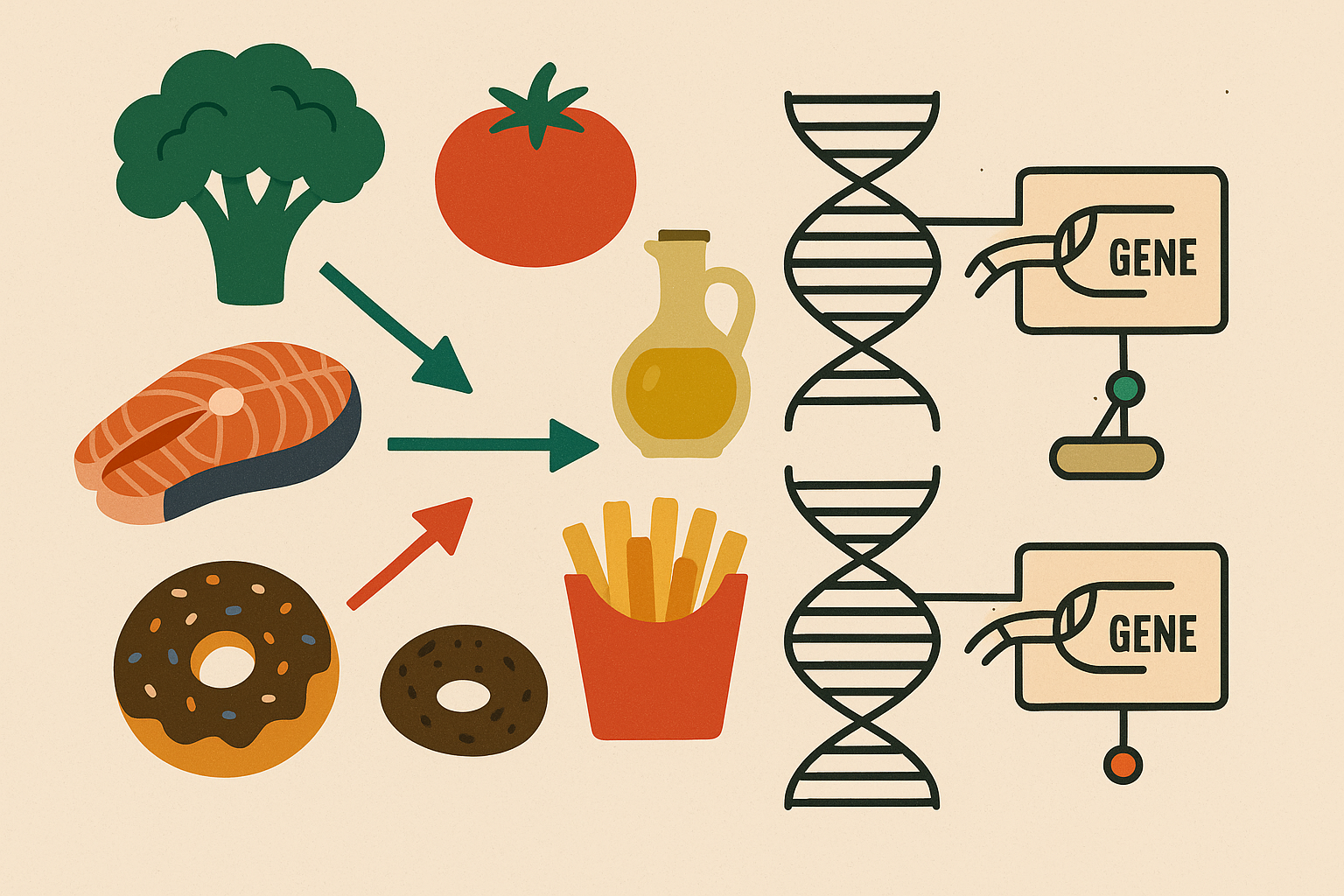
Training-Responsive Gene Activation Through Food
Specific nutrients consumed around training can enhance the expression of genes responsible for training adaptations. Sulforaphane from cruciferous vegetables can activate Nrf2 pathways that improve antioxidant capacity. This means your post-workout meal can literally change how your genes respond to training.
Broccoli sprouts contain some of the highest concentrations of sulforaphane. Adding them to your post-workout smoothie isn’t just trendy – it’s strategic gene activation. It sounds fancy, but you’re basically just eating vegetables at the right time.
The Smart System That Adapts Your Nutrition Daily
Here’s what I wish someone had told me years ago: stop trying to eat the exact same thing every day. Your body changes daily, so your food should too. It’s actually easier than rigid meal prep, once you get the hang of it.
Rather than following rigid meal plans, elite athletes use dynamic systems that adapt based on training load, recovery status, and environmental factors. This approach ensures nutrition always matches current physiological demands. It’s more responsive, more effective, and honestly more sustainable than trying to stick to the same meals every day.
Research shows that structured meal planning approaches work – this 7-day meal plan for athletes is based on an average 2,300 kcal diet with 50% carbohydrates, 25% fat and 25% protein, but the key is adapting these frameworks to your daily biomarkers rather than following them like gospel.
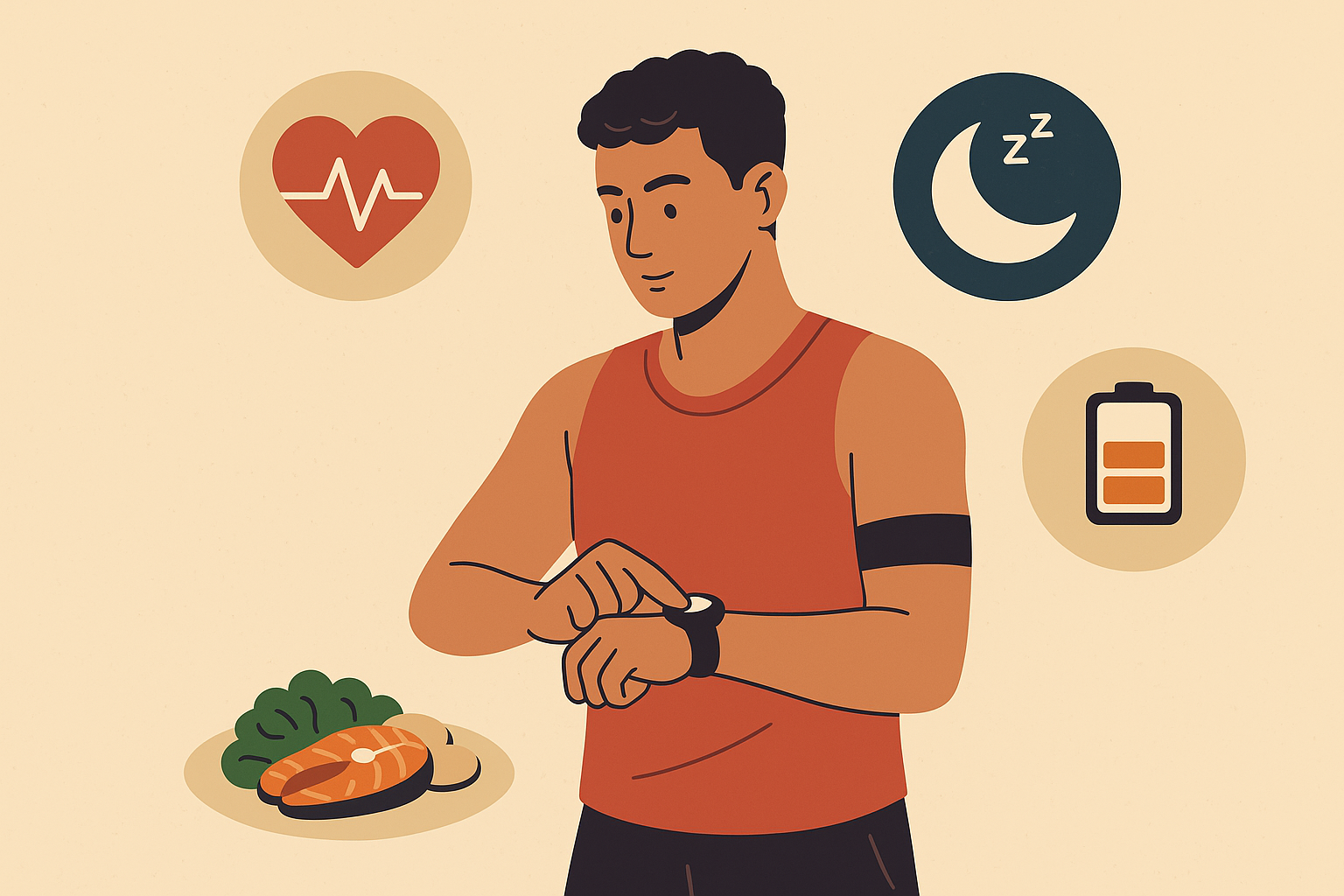
The beauty of adaptive systems is that they respond to what your body actually needs today, not what some generic 7-day meal plan for athletes says you should eat.
Using Your Body’s Daily Signals to Guide Nutrition
Simple daily assessments like heart rate variability, sleep quality scores, and subjective energy levels can modify meal composition and timing in real-time. This biomarker-driven approach takes the guesswork out of daily nutrition decisions and ensures you’re always fueling appropriately for your current state.
I know this sounds like a lot to track, and honestly, some days I just eat a peanut butter sandwich and call it good. But when I’m consistent with these principles, the difference is night and day.
When Your HRV Says “Change Your Carbs”
Low heart rate variability indicates high stress and poor recovery. On these days, reducing carbohydrate intake and increasing anti-inflammatory fats can support better recovery and prevent overreaching. This simple morning measurement can guide your entire day’s nutrition strategy.
Daily HRV-Based Nutrition Checklist:
- Check HRV upon waking (before getting out of bed)
- If HRV is 20% below baseline: Reduce carbs by 25%, increase omega-3 fats
- If HRV is normal: Follow standard training day nutrition
- If HRV is elevated: Consider adding extra carbs for high-intensity work
- Log correlation between HRV and nutrition choices for pattern recognition
I started tracking this correlation about two years ago, and the patterns became obvious within weeks. Low HRV days paired with high-carb meals consistently led to sluggish training sessions. Once I started adjusting, everything clicked.
Start Here: If you don’t have an HRV monitor, just pay attention to how you feel when you wake up. Groggy and stressed? Go easier on the carbs that day.
Sleep Quality Determines Tonight’s Dinner
Poor sleep quality scores trigger specific nutritional interventions including magnesium timing adjustments, tryptophan-rich evening meals, and modified caffeine cutoff times. Your sleep tracker becomes a nutrition planning tool when you understand these connections.
Environmental Factors Most Athletes Completely Ignore
External factors like altitude, temperature, humidity, and travel require specific nutritional adjustments that most athletes completely overlook. These environmental adaptation protocols can mean the difference between maintaining performance and struggling through challenging conditions.
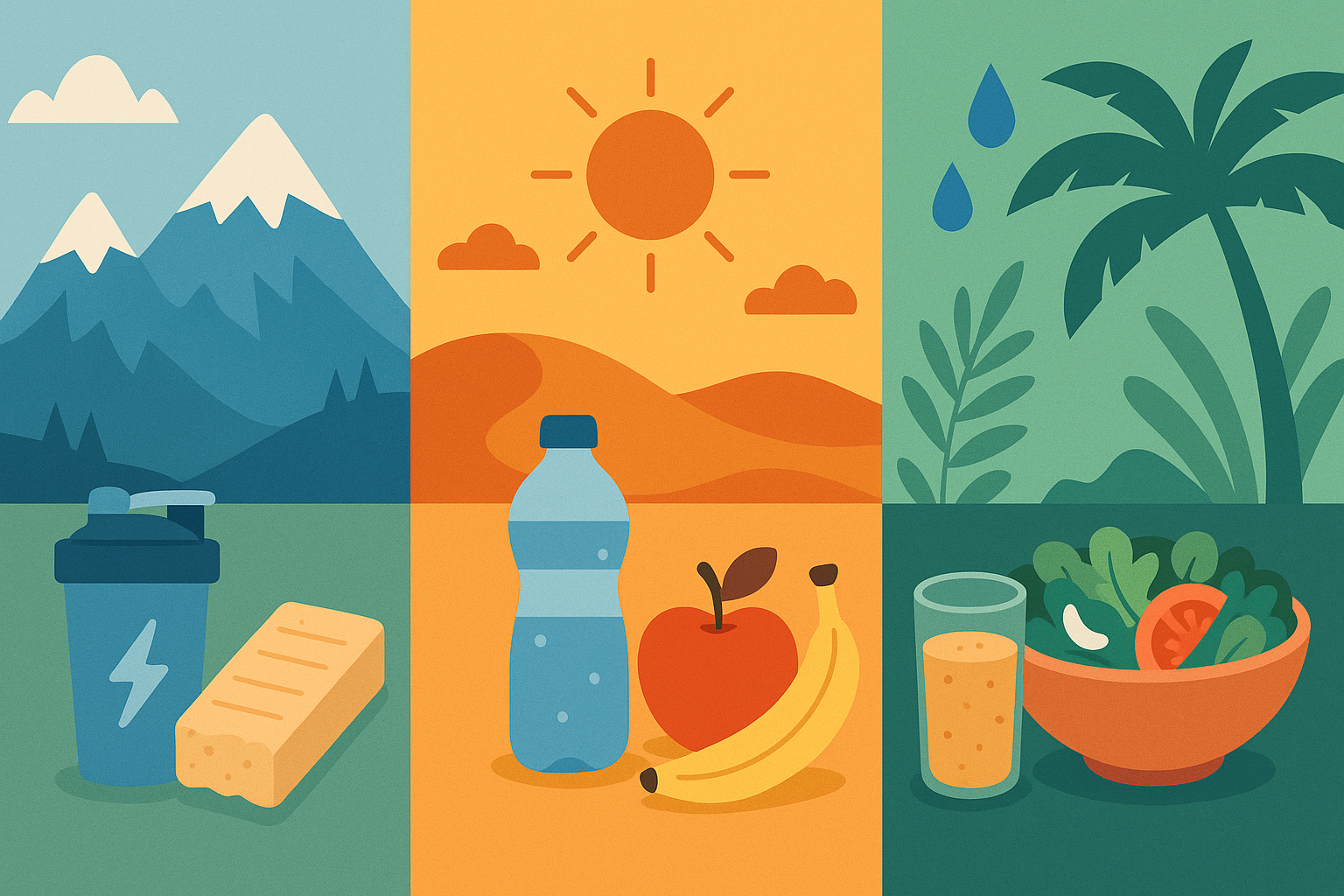
Altitude Nutrition That Actually Works
At elevation, iron absorption decreases while oxidative stress increases. Specific protocols involving vitamin C timing, iron-rich food combinations, and antioxidant loading can maintain performance at altitude. Most athletes just hope for the best – smart ones prepare nutritionally.
The first time I tried to train at altitude, I felt like garbage for a week. Turns out, just drinking more water isn’t enough – your body literally can’t absorb iron as well up there. Who knew? Now I start iron-rich meal prep a week before any elevation training.
Heat Training Requires Heat-Specific Nutrition
Training in heat requires specific electrolyte ratios and cooling foods that support thermoregulation. Menthol-containing foods and strategic ice consumption can enhance heat adaptation. This goes way beyond just drinking more water.
Heat Training Nutrition Template:
Pre-Training (2-3 hours before):
- 16-20 oz water with electrolytes
- Cooling foods: watermelon, cucumber, mint
- Avoid high-fat or high-fiber foods
During Training:
- 6-8 oz fluid every 15-20 minutes
- Sports drink if session >60 minutes
- Ice chips for core cooling when available
Post-Training:
- Weigh yourself: replace each pound lost with 16-24 oz fluid
- Electrolyte-rich recovery drink within 30 minutes
- Continue hydrating for 6 hours post-exercise
Next time you travel: Pack some electrolyte packets and actually use them. Your future self will thank you.
For athletes looking to implement these advanced strategies, Organic Authority’s carefully vetted supplements can provide the clean, effective nutrition support needed. Their marine-sourced collagen offers the specific amino acid profiles that support muscle recovery and joint health, while their plant-based supplements support the digestion, immunity, and overall wellness that these advanced meal planning frameworks require. Shop Organic Authority’s athlete-focused supplements here.
Most of this doesn’t cost extra money – it’s about timing and combining foods you’re probably already eating. The expensive stuff like genetic testing is cool, but not necessary to see improvements.
Final Thoughts
The athletes crushing it aren’t superhuman – they just figured out that working with their body is way easier than fighting against it. You don’t need perfect discipline, you just need to pay attention to what actually works for YOU.
The future of athletic nutrition isn’t about following someone else’s meal plan – it’s about understanding your unique biology and creating systems that adapt to your daily needs. These frameworks might seem complex at first, but they’re actually more intuitive than rigid meal plans once you start implementing them.
Start with one framework that resonates most with you. Maybe it’s the circadian approach if you’ve always felt like your energy doesn’t match your meal timing. Or perhaps the genetic testing route if you’ve struggled with conflicting nutrition advice that never seems to work for your body.
This week: Pick just one thing from this article and try it for seven days. Maybe it’s eating your biggest carb meal at breakfast, or checking how you feel when you wake up before deciding what to eat. Small changes compound into big results.
The athletes who are seeing the biggest breakthroughs aren’t necessarily the ones with the most discipline – they’re the ones with the most personalized approach. Your nutrition should work with your biology, not against it. These strategies give you the tools to make that happen, one meal at a time.

